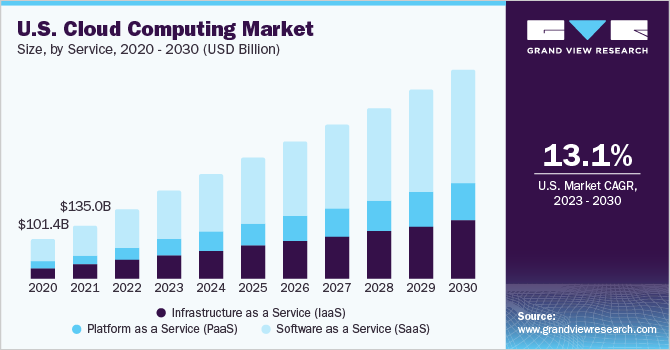
Since Amazon created the first commercial cloud in 2006, retailers have been exploring, considering, experimenting, and migrating to this modern computing method with varying degrees of success. Like any ground-breaking technology, the opportunities—as well as the challenges—seem endless.
For retailers who are successful in traditional channels, the cloud holds promise for rapid expansion. However, established retailers also face the challenges of existing infrastructure, processes, and systems that need to be maintained and can become potential roadblocks to rapid change.
A systematized, three-step approach can help retailers transition to cloud computing more efficiently, leading to a more evident return on investment.
Most established retailers have built their businesses around the counter and catalog experience. All or most of the IT infrastructure that supports these conventional retail experiences is based on mainframe and legacy systems that often incorporate many customizations specific to each organization. To continue serving existing customers, all of these systems must be maintained.
At the same time, these retailers need to create new e-commerce channels to provide their goods to a broader audience in more geographic regions to survive and thrive in the highly competitive retail market.
"Finding effective ways to migrate legacy systems to the cloud while building new or hybrid solutions that take advantage of the most critical technology trends can require tremendous resources."
First, finding and retaining employees with the proper skill set can be extremely difficult. Second, most mainframe systems batch process information with a one- or two-day delay between stages. In comparison, the real-time nature of cloud computing improves the user experience and helps the retailer run more efficiently. Third, mainframe back office systems may limit investments in cloud computing and newer technologies. Finally, new, nimble retailers who establish their businesses in the cloud from the beginning are poaching prospects and customers through their enhanced purchasing experiences.
Along with traditional legacy and mainframe systems comes the idea that all this IT infrastructure and investments are simply necessary evils—cost centers required to do business.
"The status quo needs to be revised to perform customer acquisition cost analysis and make smart decisions about marketing and sales investments."
While overall historical data has been available for years, it’s impossible to see data at the granular level in real time. That lack of transparency and real-time reliable data prohibits effective A/B testing or making proactive decisions in the moment. Instead, delayed decisions are made at month- or quarter-end, which may no longer be as effective and can even contribute to other problems.
For example, systemic customer service problems may not appear until periodic reports are released, which means either a great deal of complaints need to be handled or many customers are lost. Logistics or shipping problems that arise from the incompatibility of systems and undetected downtime of third-party vendors may lead to a lack of transparency and duplicate orders that result in a great deal of waste.
Since legacy systems are seen as a cost instead of as an investment, retailers are always looking for cost optimizations by cutting things like HR, payroll, or IT costs or seeking ways to reduce licensing fees, hardware, and database storage instead of identifying waste and inefficiency.
Retail customers may be overpaying by up to 25% for non-optimized systems or legacy licensing agreements.
The first and most obvious step for retailers is to shift as much of their infrastructure from on-premise servers to cloud servers. Retailers maintaining legacy systems must purchase and run their own data centers, servers, and related IT devices. In addition, they need a large enough infrastructure to support their highest-demand seasons, even if those seasons last only a few months out of the year.
Migrating this infrastructure to the cloud means that retailers pay for only what they need. During slow seasons, their cloud computing costs are lower; during peak seasons, they can quickly scale up to obtain the computing power they require to effectively and efficiently serve a greater number of customers.
Since IT costs are more tightly correlated with actual sales, resources and money can be redirected to marketing or other revenue-generating activities. This first step in moving to the cloud can help retailers shift from viewing IT as a pure cost center to seeing it as an investment.
"The global cloud computing market size was valued at 483.98 billion USD in 2022 and is expected to grow at a compound annual growth rate (CAGR) of 14.1% from 2023 to 2030."

After retailers successfully migrate basic infrastructure to the cloud, it will be easier to grow. Retailers quickly discover that existing mainframe problems scale along with that growth if continued cloud migration does not occur.
The second step of monetizing the cloud is consuming the platform as a service. Managed services can help retailers integrate back office enterprise resource planning systems with front office e-commerce platforms. The key is finding ways to effectively manage a hybrid system that includes both legacy and cloud computing, as well as all the different technologies and vendors that may be part of an existing system.
While retailers can face licensing challenges and high initial costs, a successful migration means long-term overhead cost reduction and access to more modern tools. Retailers should also be able to pinpoint specific components that fail during the customer journey so appropriate compensation and resolution can occur quickly.
The final stage of monetizing the cloud allows retailers to modernize the applications. This allows a granular analysis of the cost of every customer journey and sale.
For example, if users perform 20 product searches before narrowing their choice to four and take a few days to complete the purchase, retailers may know they have to send three emails to remind those users they have items in their cart. Each user search and email costs retailers cloud-computing money, but if retailers can close a $100 purchase, they can accurately forecast cloud costs against expected revenue.
This modernization also provides retailers with functionality that would have been impossible in legacy solutions. Retailers can add new search capabilities, personalized loyalty programs and discounts, and other new features that take advantage of advanced machine learning and artificial intelligence technologies.
Most importantly, this final stage delivers a seamless user experience for customers, combining all their interactions with the retailer into a unified interaction. Customer satisfaction and loyalty increases, resulting in long-term growth and success for retailers.
IO Connect Services is an AWS Advanced Tier Services Partner, a certified MuleSoft® System Integrator Partner, a Salesforce Commerce Cloud Consulting Partner, and a member of the Datadog Partner Network. Our professionals have over 20 years of experience delivering complex technical solutions worldwide. We offer solutions in migration, DevOps, cloud native development, cloud solution architecture, security and compliance, and managed services. The company has achieved AWS competencies in retail, migration, and DevOps. We work relentlessly on establishing and maintaining trust with our clients and all business partners for long-term relationships.
Focusing on companies "born in the cloud" or wishing to migrate to the cloud, IO Connect enables them to leverage the advantages of having a cloud-native infrastructure.
Reach out to us today. Schedule a consultation to learn how your digitally native business can overcome its growth challenges.